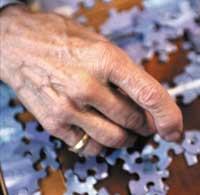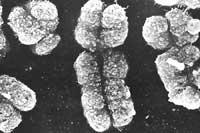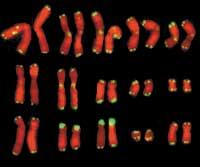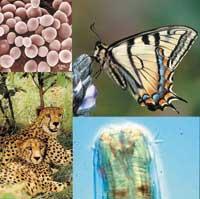Unintentionally… and you have to age!

Aging is a continuous and dynamic process, it is not possible to determine when the human being begins to be old. But the final point is clear: death. But the decline of the body begins long before. Although morphological, physiological and psychological changes slowly occur: fatigue begins, vision and hearing is lost, love is lost, bones and muscles also lose mass and also the person becomes more sensitive to diseases.
At the same time, today's society attaches great importance to youth. When the first signs of aging begin, many, hoping to slow down this process, begin to use special facial creams. However, the results are usually not very clear. However, these bad results have not prevented the creation of business in this regard, an industry in constant growth.
Aging and human beings
Aging is a phenomenon that is observed above all in our species, since it is a direct consequence of the knowledge of hygiene and biomedicine. These two factors have managed to drastically reduce diseases, which has allowed man to live longer on average. Formerly, before their aging they became sick and died. Therefore, it can be said that the increase in the number of older persons in industrialized societies is an artifact of human civilization.
However, despite the significant increase in human life expectancy, experts believe that maximum longevity has not changed in the last hundred thousand years. The decline in diseases has not stopped the aging process and the maximum human longevity seems to be in the 120-130 years. The maximum life of each species is considered genetically limited.
For the benefit of the species?

It has been mentioned that the aging of individuals benefits the species. Keep in mind that old animals are not necessary for the survival of the species, since they have exceeded the age of fertility. It does not seem, therefore, that the defense of natural selection can benefit the species. Thus, the human being, in 99.9% of the time he has lived on Earth, has had a life expectancy of about 30 years.
Until a few years ago it was thought that aging and death were to limit the size of the population or accelerate generational renewal, which helps species adapt to environmental changes. But this theory has the problem that, although all species have the maximum longevity, in nature rarely do individuals come to that moment. Wild animals do not live as much as to die, as they kill first infections, predators, hunger or cold. Therefore, natural selection has little chance of evolutionarily opting for genes that increase or shorten their longevity. Therefore, this theory does not explain why species have a maximum longevity and a natural death.
In addition, to ensure the survival of the species, the individual must live for as many years as to reproduce and, where appropriate, be the holder of the breeding. But for the species it is better to spend energy in reproducing than in extending its life. Man, however, lives longer. Why?
Is aging a process directed by genes?
Much remains to be investigated in the aging process. In fact, although diseases have decreased considerably, there are still chronic diseases that cause death, such as cancer, neurodegenerative diseases and heart diseases. Therefore, as long as these diseases do not disappear, you will not know exactly what causes aging.

On the other hand, it can be thought that aging is not a process directly controlled by genes, since not all individuals age in the same way and at the same speed. Heterogeneous changes resulting from aging and orderly changes in embryogenesis and development are very different, for example. The latter are genetically directed processes, which vary very little from one individual to another, but the phenomenon of aging is totally changing.
But, on the other hand, researchers have found that it is possible to lengthen or shorten the longevity of animals by mutation of genes. In addition, cells can limit their number of divisions: telomeres. They are like the tails of chromosomes, which are shortened in each cell division. In this way, cells die when the telomere disappears as a result of several cell divisions. They somehow function as cell clocks.
Some theories
In recent years a great effort has been made to unify all theories about aging. About a hundred years ago, for example, the relationship between metabolic rate and longevity was studied. They observed that animals with the highest metabolic rate were those with the lowest longevity. Thus they explained, for example, that the man and the turtle have such a long life.
But there are other theories like the theory of free radicals. According to this, the phenomenon of aging is a consequence of the accumulation of damage caused by the reactive forms of oxygen produced in the cells. It was soon discovered that both theories complement each other. In fact, those with higher metabolic rate are the most free radicals generated.

These oxygen-free radicals are typical products of the metabolism that occurs in mitochondria and peroxisomes. In the mitochondria the respiratory chain used to obtain the energy that the cell will use later occurs. In this chain electrons are transported from one molecule to another thanks to the differential potential between them, a process in which the oxygen molecule itself can also receive an electron. This excess of electrons produces a very unstable oxygen molecule and therefore very reactive.
These free radicals are to some extent necessary; phagocytic cells use them to fight infections. But abundance can cause serious damage: it can react, oxidize and cause damage to surrounding molecules such as lipids, proteins and DNA. Therefore, the cell has created enzymatic systems that break down these radicals, such as catalase, superoxide dismutase and glutation peroxidase. But with mistakes and years cells begin to accumulate radicals and suffer oxidative stress.
On the other hand, the cell also has the way to correct errors produced in DNA, but in mitochondria this repair system is more scarce. For this reason, errors in mitochondrial DNA accumulate over the years and DNA does not produce the respiratory chain machinery used to obtain energy. In this way it is finally achieved to reduce the energy production of the cell.
When the energy production of the cell decreases considerably, programmed death (apoptosis) occurs in the cell. In the mitochondrial membrane large pores are formed that make the cell permeable to many substances, with the consequent loss of electric charge and, in turn, of capacity to perform its function. Without the possibility of obtaining energy, the cell dies and the death of many cells ceases to be functional in the organs.
On the other hand, it seems that these reactive forms of oxygen can also cause diseases that do not yet have an easy remediation (both arteriosclerosis and neurodegenerative diseases).
Therefore, there does not seem to be genes that encourage direct aging. It is not a programmed process, in chromosomes there is no gender that encourages intentional aging of the body after a limited number of years. It is a very different process: it is a consequence of the numerous molecular damages that occur over the years in the mitochondria, a consequence of the accumulation of damages that have not suffered repair. It can be said, therefore, that the length of life remains in the hands of the genes that control the antioxidant repair and defense of DNA. This is how, although aging is not a genetically programmed process, it has managed to lengthen or shorten its life by mutating certain genes.
Future prospects
If diseases that cause death could ever be cured, could the aging process be halted and the maximum lifespan increased? In case of any form, it should be the one that prevents oxidative stress. However, to date, antioxidant therapy (vitamins A and E) has not had good clinical results. This new therapy is still taking place and the appropriate dose, duration and conditions have probably not been determined.

On the other hand, several animals have tried to increase the activity of enzymes that eliminate free radicals and have managed to extend their useful life. There is therefore a way to curb the aging process through gene therapy, but no human trials have yet been conducted.
However, in recent years it has been proven that reducing calorie intake can also contribute. Animal trials have shown that a low-calorie diet can extend your life. By taking few calories, the metabolism decreases and the oxidative stress that occurs also decreases. This reduces the oxidation defects in proteins, lipids and DNA and curbs the aging phenomenon. However, its use as therapy with humans can cause major problems at the moment, as it may have other effects.
Otherwise, altering the aged or diseased organs can be a way of not killing human beings, which could be achieved by cloning. But would you manage to control age?
In the opinion of Leonard Hayflick, a researcher at the University of California, although the human being wants to delay the moment of death to the maximum, the delay in the aging process of a person may be considered a disease. In fact, when a physical or mental delay occurs in children it is understood as such and can be a similar process.
Are all living beings aged?

Aging is a phylogenetically dominant but not universal phenomenon. Over the years some species do not increase mortality or decrease fertility; they do not seem to be programmed to age and kill. Bacteria, for example, do not die; they multiply in half, but the original cell does not die. There are other more complex forms of life that do not age. Therefore, some authors do not admit that aging is a process that must necessarily occur due to biological fatigue. Why then?

The maximum human longevity has not varied in the last 100,000 years, it seems to be around 120-130 years. What has changed is life expectancy. In industrialized countries it has gone from about 49 years in 1900 to 76. This increase of 27 years is similar to that of the Roman era until 1900 and is due to the decrease of infectious diseases in children.
In fact, XX. If in the eighteenth century life expectancy has grown 27 years, 21 years has increased in the first 70 years of the century, and in the last 30 years only 6 years. The best hygiene and discovery of antibiotics and their small findings have allowed. Unresolved chronic diseases, especially cardiovascular diseases and cancer, are the causes of mortality in older people.





